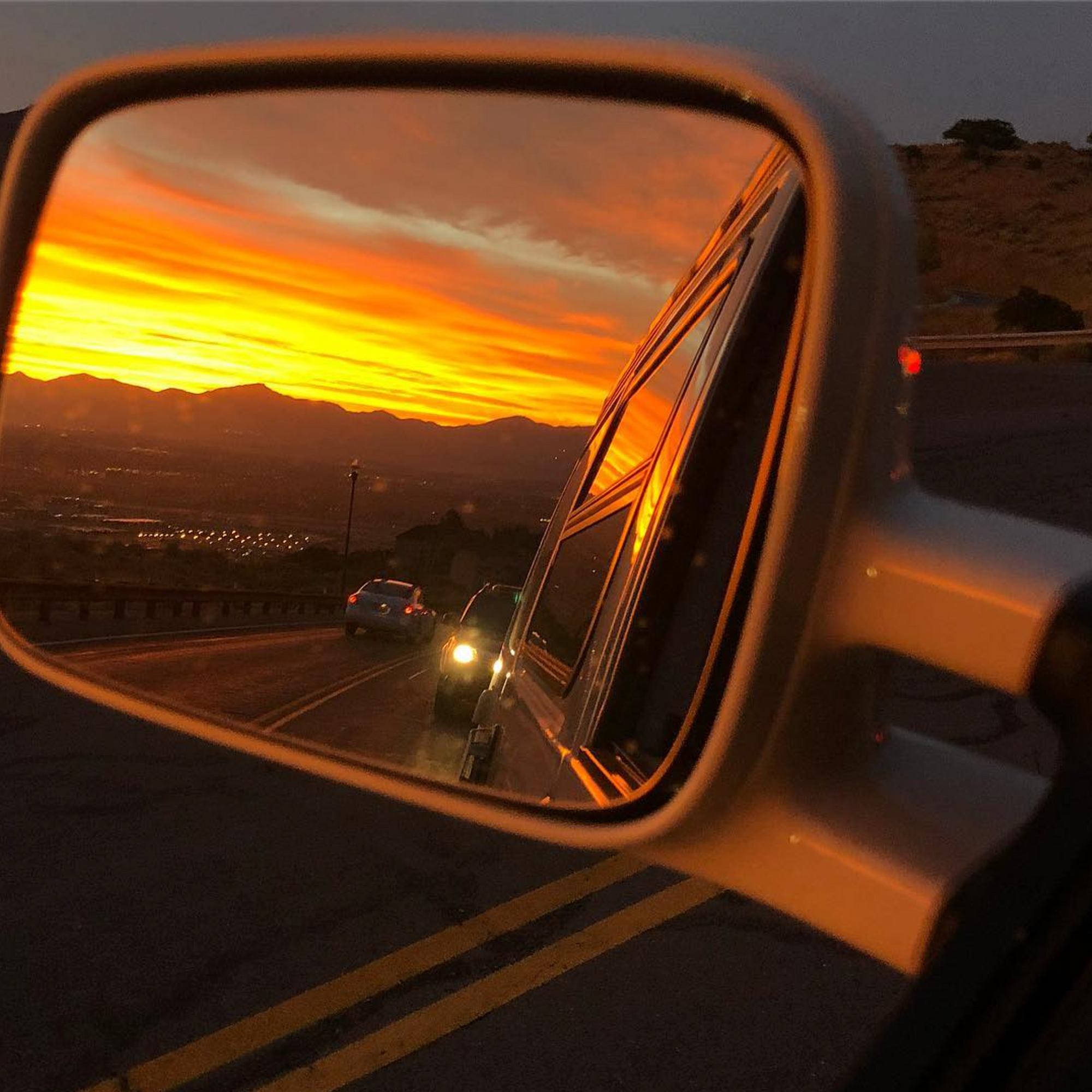
Climbing the Wasatch with Kolin Powick
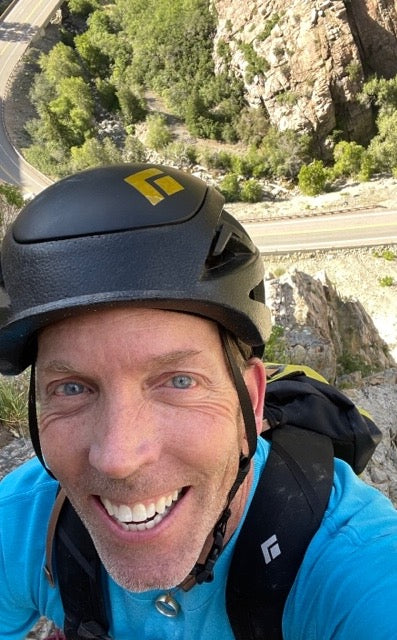
The Crux Series is a collection of interviews with mountain experts that have a wealth of knowledge about each of the peaks in our glasses. In celebration of summer climbing season and our Wasatch Collection we connect with Kolin Powick.
Kolin Powick, the visionary product lead at Black Diamond, is an icon of adventure and innovation. His boundless dedication and passion for climbing and skiing gear have propelled the company to new heights. Ellen Powick, his amazing wife and a force of climbing excellence is a brilliant and adventurous soul herself. Ellen's love for climbing compliments Kolin's pursuits, making them an inspiring power couple. Together, they epitomize the spirit of adventure and love, leaving an enduring impact on the outdoor community and shaping the future of life in the mountains. This interview was from the March of 2023 just before KP retired from his VP role at Black Diamond. He now holds the unique role of Chief Field Liaison Officer for Black Diamond.
Photos courtesy of: @kpowick
My wife Ellen and I are from Calgary. The week I turned 30, we sold everything we owned, quit our jobs, and got married… all in the same week. The day after we got married we hopped in our 21-foot RV which we had just bought, and headed off on a one-year rock-climbing honeymoon road trip. We traveled all over the US and to be honest, I had barely even heard of Utah before that. We had met some guys on Denali that spring who were from Salt Lake City, and we asked them what it was all about? They told us, "There's five pitch granite routes you can do before work, incredible skiing, ridge traverses, ice climbs, sport climbing and more," to which I responded, "Where is this fantasy land? What are you talking about?" Plus as it happens both of these guys were engineers - so this fantasy place was close to a city where one could find an engineering job as well - we're both engineers so it immediately piqued our interest.
So we got married in mid-September and immediately started off on our one-year honeymoon, basically following good weather. We traveled to Wyoming first, and then we went to Rifle in Colorado. Next, we came over to Utah and drove into Salt Lake. We took the very first exit and immediately noticed an REI store. We pulled into REI, parked, got out of the RV, and were looking straight at Mt. Mount Olympus. The Wasatch range is right there.
"What? Are you kidding me? The climbing is right here, and there's a city right here too!" Our minds were blown. It was too hot at that time so we continued on our way, climbing wherever conditions were good and the camping was free. Then at about six months into our trip we started wondering if, after the year off, we should look for jobs in the States and work for a while - try to find engineering jobs in a place with a longer rock climbing season than in Canada, and quick climbing access. Salt Lake City was always in the back of our minds.
On our trip we went to Nevada, California, Arizona, and Colorado, and then to Tennessee, Kentucky, and West Virginia, a quick visit up to Ontario, and then headed back west to Wyoming, and finally back to Utah.
At month 11 we returned back to Salt Lake City, checked out the area and the local climbing more in-depth, and started looking for jobs. Right at the one-year mark, we found jobs and rented a house. We figured we’d stay here for one to three years, and that was 25 years ago. We’ve been here since the Fall of '99.
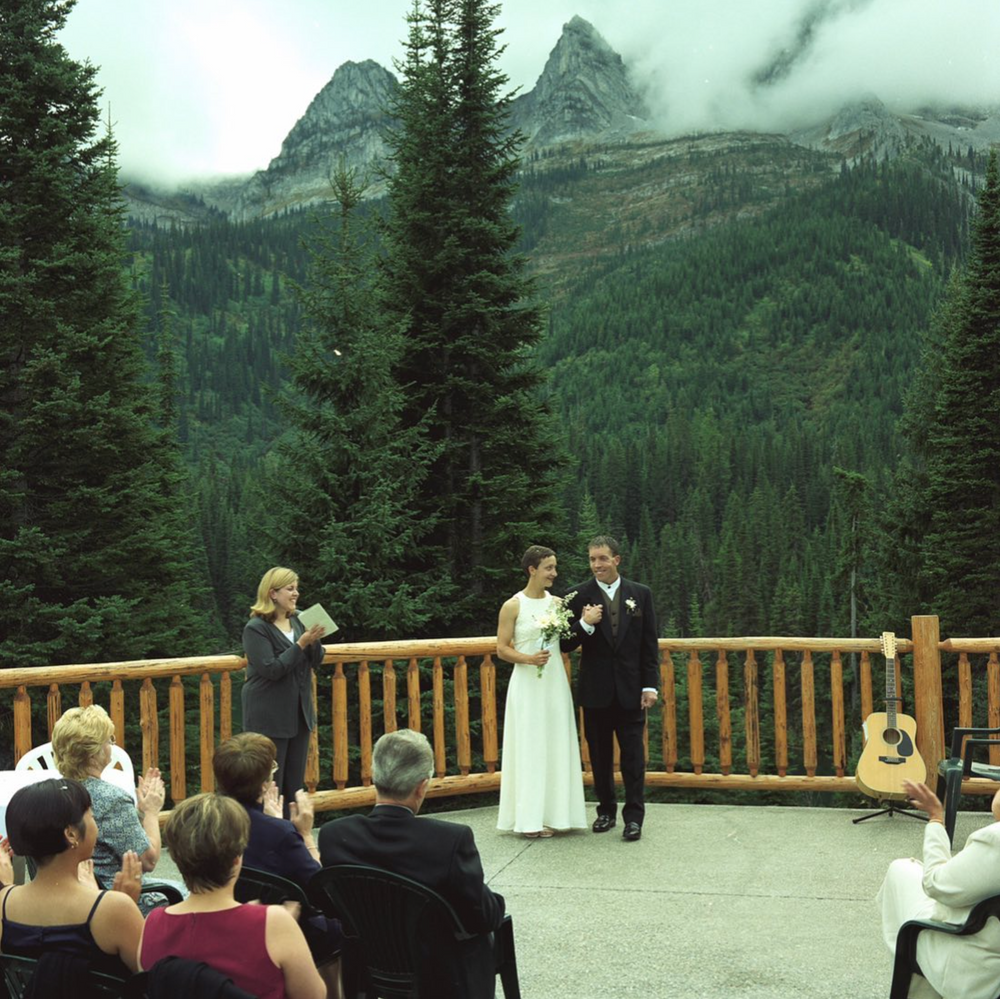

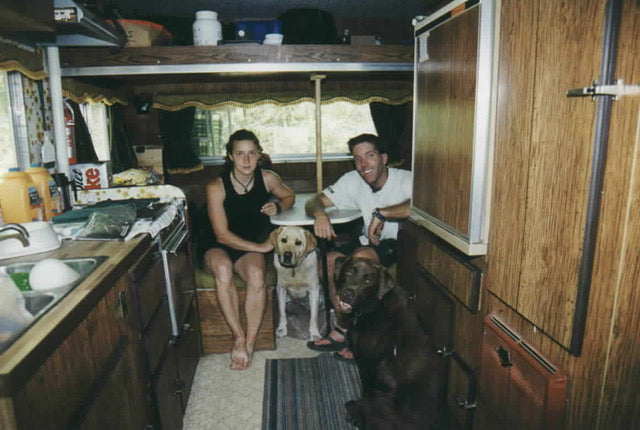
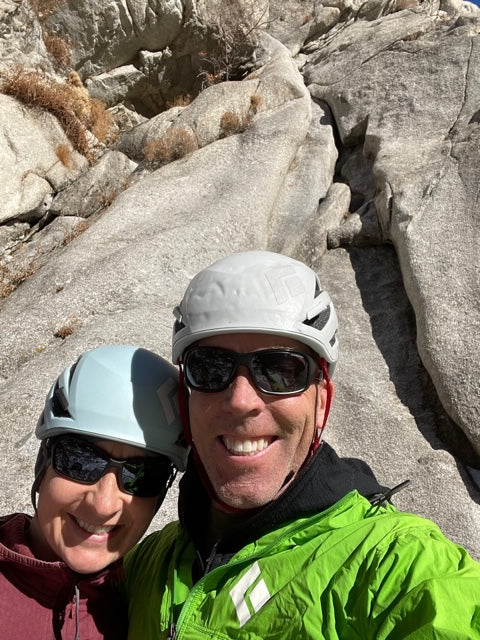
Our first time here, I don't even think we climbed. But then when we came back and were living in our RV and parking it wherever we could, looking for jobs, and climbing down at Maple. But technically Maple isn’t in the Wasatch range. I'm pretty sure the first route we did in the Wasatch was in Little Cottonwood Canyon, a route called Crescent Crack. It's a classic granite trad route, 5.7 multi-pitch. Since then, I've probably done that route almost more than any other route in my life. It's the classic pre-work circuit, Crescent-to-the Coffin link up. I’ve done it every month of the year, even on Christmas Day (it’s south facing). I’ve probably done it over a hundred times. I mean the Wasatch is one of the best-kept secrets in climbing. I should actually tell everybody reading this interview the real truth… the Wasatch sucks ;)
It's just incredible and so multifaceted from bouldering, sport climbing, trad climbing, scary adventure climbing, ridge scrambles, solos, huge linkups, backcountry skiing, and ice climbing. It's kind of mind-boggling everything that the Wasatch has to offer.
There are some super classics like the West Slabs of Olympus. I really don't solo that much, but I do solo this, it's probably 5.4 and in the spring, you kind of punch up the snow gully wearing crampons or micro-spikes, and then you can do the whole thing in approach shoes. It must be about 1,000 feet of fun 5.4 quartzite slab climbing - and then scramble down a different gully and back to the car. I'm not a super fast guy, but for me, most of the circuits I seem to do are all about three hours. So that's a super fun car-to-car three-hours before or after work thing to do.
Then there's another classic scramble called the South Ridge Superior, And again, it's usually done as a solo, but it's relatively easy. There are a few spots that if you fell, you would die, so you’ve got to be careful but generally, it’s a ridge scramble. . There are a couple of moves of 5.3 maybe and some exposure for sure - but it's pretty reasonable. I would take most competent friends and just say, "Hey, watch yourself here". It must be close to 3,000 feet of gain - basically a lung burner sort of scramble fitness thing - but puts you in an incredible position in a spectacular picturesque location. Once again, for a generalist like me, it's three hours car-to-car. However, some of my mutant buddies do it in an hour and a half car-to-car. I just don’t get it!
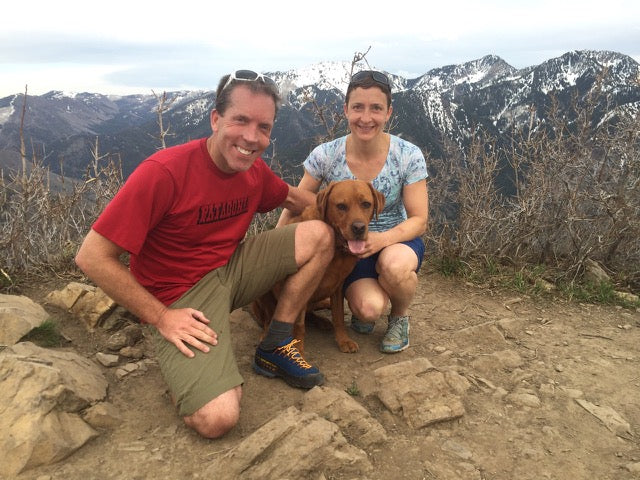
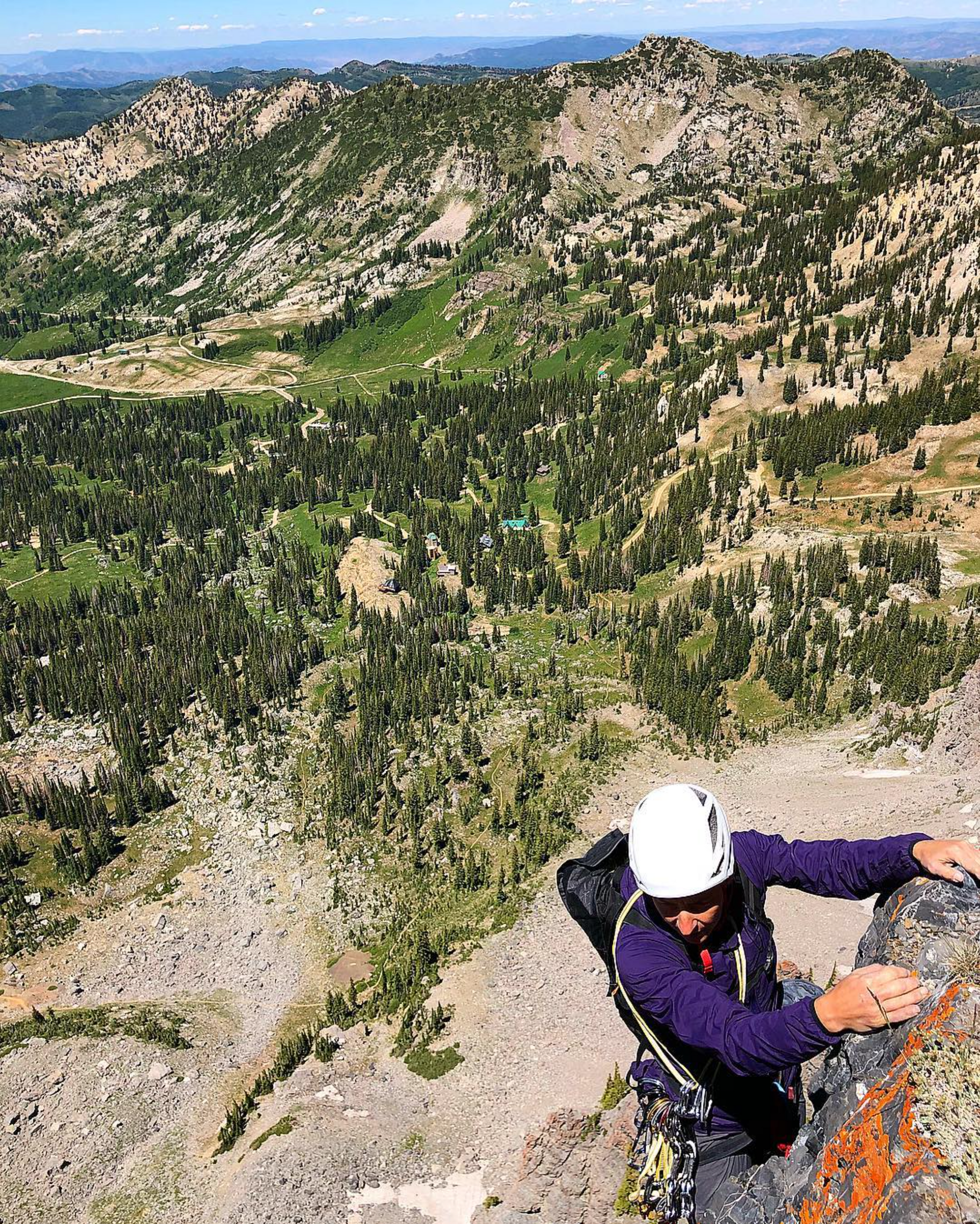
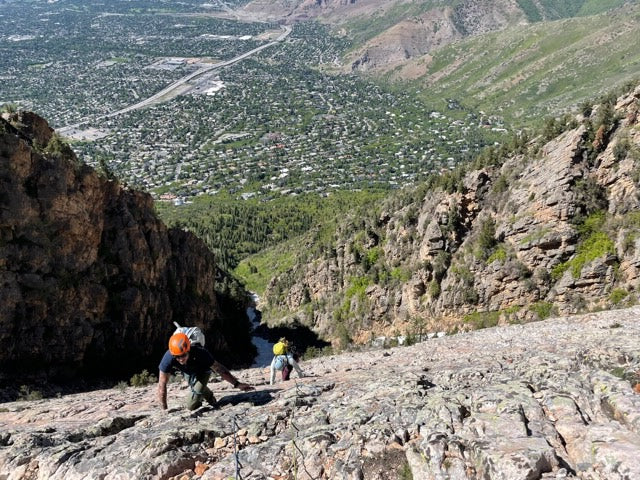
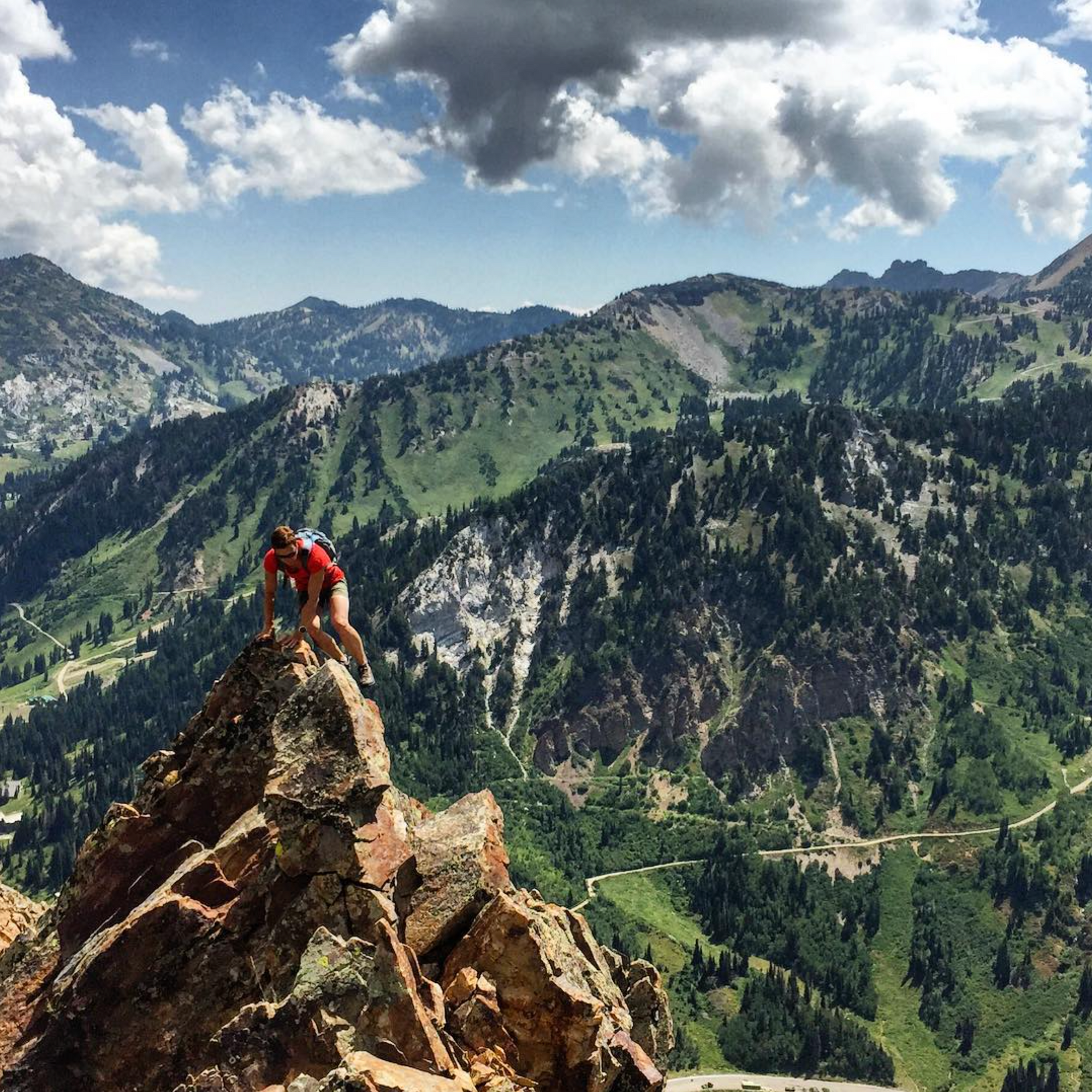
You can do the West Ridge of Grandeur, which is really just a hike that you could take a dog on. That's kind of less than three hours car-to-car, and once again a lung and leg burner. It is low in the range and faces West so doesn’t get much snow which means you can do it all year (microspikes and trekking poles recommended when there’s snow up high).
And then sometimes I try to link some of these up. One day a few summers ago, I decided to try all three back-to-back - Grander, the West Slabs, and the South Ridge in a day. Makes for a fun day covering lots of terrain resulting in a good night’s sleep!
One thing that the Wasatch has to offer that I don’t partake in, because I'm too old, is to boulder. “They” say the bouldering in the Little Cottonwood is off charts good. Granite bouldering is just hard to me and ultimately just not my thing. But the bouldering here is really good!
There's something for everybody here. There are bolted multi-pitch routes up at the top of the Alta on Devil’s Castle. There's adventure climbing across from Alta, - bolted with some gear. There's quartzite sport climbing and trad climbing, there's granite trad climbing and scary granite slab climbing, lots of ridge scrambles and hiking. There is definitely enough to keep you busy. When you’re here long enough, you usually fall into your own personal circuit based on what you like and what the weather is doing. If it's hot, I go here, if it's cold, I do this... But, it's awesome and so far I’ve just mentioned a few things in just Big and Little Cottonwood.

There are some super classics like the West Slabs of Olympus. I really don't solo that much, but I do solo this, it's probably 5.4 and in the spring, you kind of punch up the snow gully wearing crampons or micro-spikes, and then you can do the whole thing in approach shoes. It must be about 1,000 feet of fun 5.4 quartzite slab climbing - and then scramble down a different gully and back to the car. I'm not a super fast guy, but for me, most of the circuits I seem to do are all about three hours. So that's a super fun car-to-car three-hours before or after work thing to do.
Then there's another classic scramble called the South Ridge Superior, And again, it's usually done as a solo, but it's relatively easy. There are a few spots that if you fell, you would die, so you’ve got to be careful but generally, it’s a ridge scramble. . There are a couple of moves of 5.3 maybe and some exposure for sure - but it's pretty reasonable. I would take most competent friends and just say, "Hey, watch yourself here". It must be close to 3,000 feet of gain - basically a lung burner sort of scramble fitness thing - but puts you in an incredible position in a spectacular picturesque location. Once again, for a generalist like me, it's three hours car-to-car. However, some of my mutant buddies do it in an hour and a half car-to-car. I just don’t get it!


You can do the West Ridge of Grandeur, which is really just a hike that you could take a dog on. That's kind of less than three hours car-to-car, and once again a lung and leg burner. It is low in the range and faces West so doesn’t get much snow which means you can do it all year (microspikes and trekking poles recommended when there’s snow up high).
And then sometimes I try to link some of these up. One day a few summers ago, I decided to try all three back-to-back - Grander, the West Slabs, and the South Ridge in a day. Makes for a fun day covering lots of terrain resulting in a good night’s sleep!
One thing that the Wasatch has to offer that I don’t partake in, because I'm too old, is to boulder. “They” say the bouldering in the Little Cottonwood is off charts good. Granite bouldering is just hard to me and ultimately just not my thing. But the bouldering here is really good!
There's something for everybody here. There are bolted multi-pitch routes up at the top of the Alta on Devil’s Castle. There's adventure climbing across from Alta, - bolted with some gear. There's quartzite sport climbing and trad climbing, there's granite trad climbing and scary granite slab climbing, lots of ridge scrambles and hiking. There is definitely enough to keep you busy. When you’re here long enough, you usually fall into your own personal circuit based on what you like and what the weather is doing. If it's hot, I go here, if it's cold, I do this... But, it's awesome and so far I’ve just mentioned a few things in just Big and Little Cottonwood.

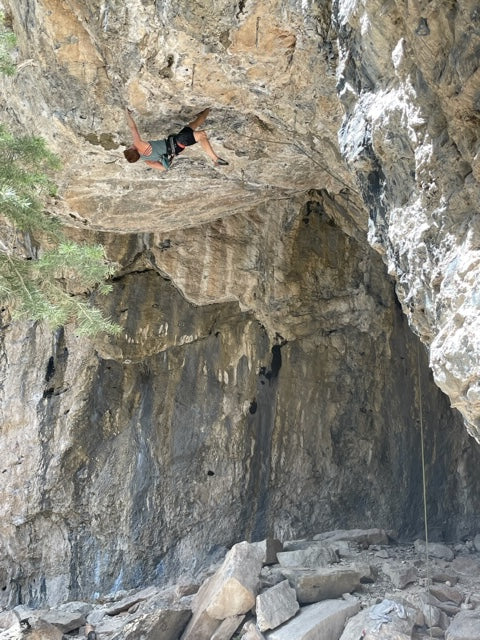
Then you have American Fork Canyon, which is one of the original sport climbing areas, along with Smith Rocks, in the US. Ellen pictured cranking at American Fork.
There is awesome trail running and mountain biking up Mill Creek. And then there are all kinds of hikes down further south like Timpanogos and Mt. Nebo. I mean though the Wasatch is narrow, it’s actually quite a long range.
There's another awesome climbing area - technically part of Little Cottonwood Canyon, called, Lone Peak, though it's not a before or after work place because it's a grueling three-and-a-half hour approach. It's an incredible alpine cirque with incredible camping and three and four-pitched granite trad routes. It’s also nice because it’s up high and faces West so it can be a nice reprieve from the heat during the hot SLC summers - though the approach can be brutal in the heat. I look at it right out my home office window. We literally leave right from our house with our packs on, and hike up to Lone Peak Cirque. It’s pretty awesome.
There's also a super challenging ridge link up that goes around both sides of Little Cottonwood Canyon. The whole loop is called the W.U.R.L., the Wasatch Ultimate Ridge Link-Up.
I've done it in two pieces - it’s huge but I don’t think I could swing it in a push. It’s just too much. If I added my times together, it would probably be 38 hours or something. Most folks are able and willing to try it go for under 24 hours (which is impressive), and then you have these ultrarunners doing it in under 15hrs now. It's insane. But it’s a pretty awesome ridge scramble and amazing that it’s so close to town.
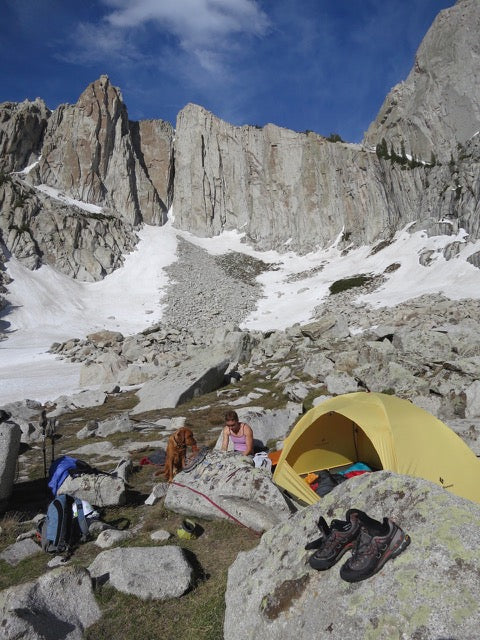
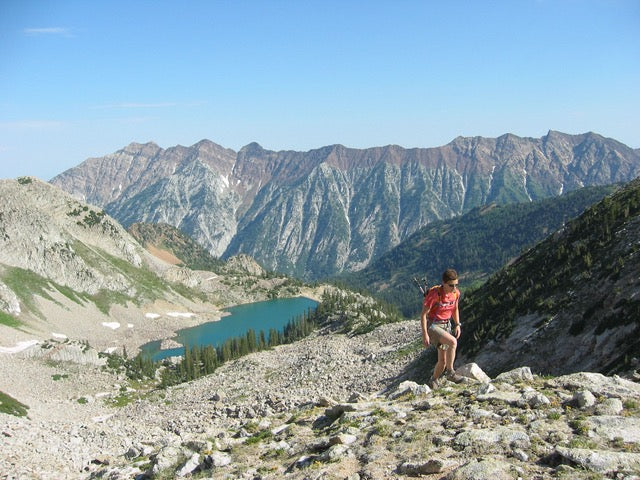
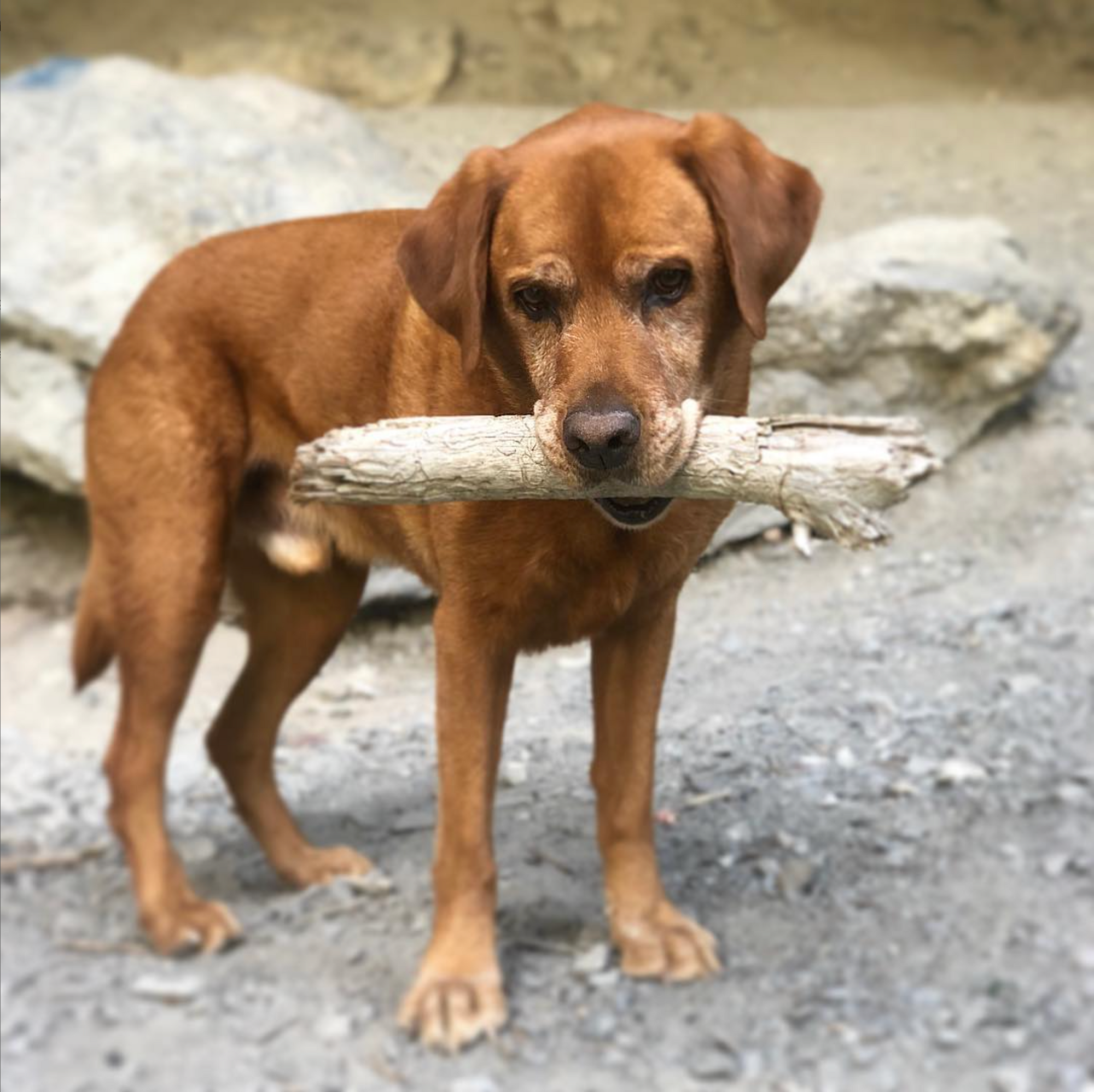
One of the cruxes in Big and Little Cottonwood is that it’s the watershed, so there are no dogs allowed. We’ve had dogs our entire life. So when you're a dog guy that can bring your dog to work, as I do, then it makes the logistics for the pre and post-work hard.
Crowds are a challenge, but you can manage that. Start early, go late, go to less popular areas or just meet some new friends at the crag! And then frankly, it's kind of temperatures and conditions as well. It gets really hot here in SLC, and a lot of the good climbing in Little Cottonwood for example, is south facing. So really, the window is pretty short in the spring and fall for that area. The trick is to go early, and head up higher into the hills as the summer progresses to escape the heat.

At Black Diamond, we’ve always been able to bring our dogs to work. It’s a real privilege as it truly is a stress reliever having so many dogs in the office. You can hang out with your pup or go visit others, it forces you to take them out for a quick walk and have a breath of fresh air. It’s also nice to not have to rush home as you would if they were left alone at home all day.
Rumple showed up to work the VERY first day I got him (November 14th, 2008), and was at work almost every single day for 13.5 years. He was a longer term “employee” than probably 90% of the employees. Everyone knew him. He often went to meetings, and images and videos of him were often included in my product presentations. Rumple was a legend at Black Diamond.
A few months after we were devastated after losing Rumple (April 8th, 2022) there was a bit of a HOTDOG BBQ on the West Lot area - I had been away climbing up in Canada the 2 weeks prior, and everyone kept checking to be sure that I would be there for the “event”.
Well, apparently, the day that we lost Rumple, the whole RnD team started brainstorming ideas – “How can we honor Rumple, “What can we do for KP? “. The WHOLE company was in on it – from facilities, to HR, to finance, to the whole team in RnD… They decided to build a fenced in dog run for all the dogs at work. (there are over 50). They called it the RUMPLE RUN. Complete with a memorial bench and plaque. I was and am still blown away! It is the most thoughtful thing I could think of to honor such an important member of the Black Diamond family.
Yeah, here's a cool thing I don't think gets mentioned a lot is - the rock. I'm not a geologist, I'm an engineer, but it appears to be a geological freak show here!
Big Cottonwood is quartzite. Right beside it, Little Cottonwood is granite. The top of Little Cottonwood has this limestone band that you're climbing on. The next canyon over is American Fork which is totally limestone. And then if you go down, kind of out of the Wasatch, but Maple Canyon is conglomerate rock. And then go even further in Utah to the Moab area, and you have sandstone!
So you have all these different formations. Climbing granite is really different than quartzite, which is really different than limestone. So you kind of get it all. I think it makes you a better climber, climbing on all these different kinds of rocks. Different footwork is required, handholds are different, and placing gear in quartzite, for example, is really different than placing gear in granite. There is such a great variety packed into the relatively small Wasatch range.
That’s why we’re here. Black Diamond is located up against the mountains, it's literally 10 to 15 minutes and we can be roped up and testing gear. We can be sitting in the office and someone says, "Hey man, let's go try out this cam." And frankly, between all of us at work, many being climbers, we know the routes so well that we can be specific, "Let's go to this particular route because we know this placement is kind of sketchy” etc. We'll back it up with additional gear and just go take a bunch of whippers to see what happens.
It's like an R&D Lab here in the mountains. The reality is we can go out using and wearing almost everything in some prototype version most of the time; prototype tools, prototype harness, prototype clothing, prototype helmets, prototype everything. You come back to the office and go talk with the design teams, "Hey, the grommet's ripping out of my pants, or this buckle is too hard to loosen with gloves on, or the headlamp clips are a bit finicky, etc.” It's just how it is with so many climbers and skiers here at BD, and with the access just a few minutes out the door. I think that’s what makes BD special and our products stand out.
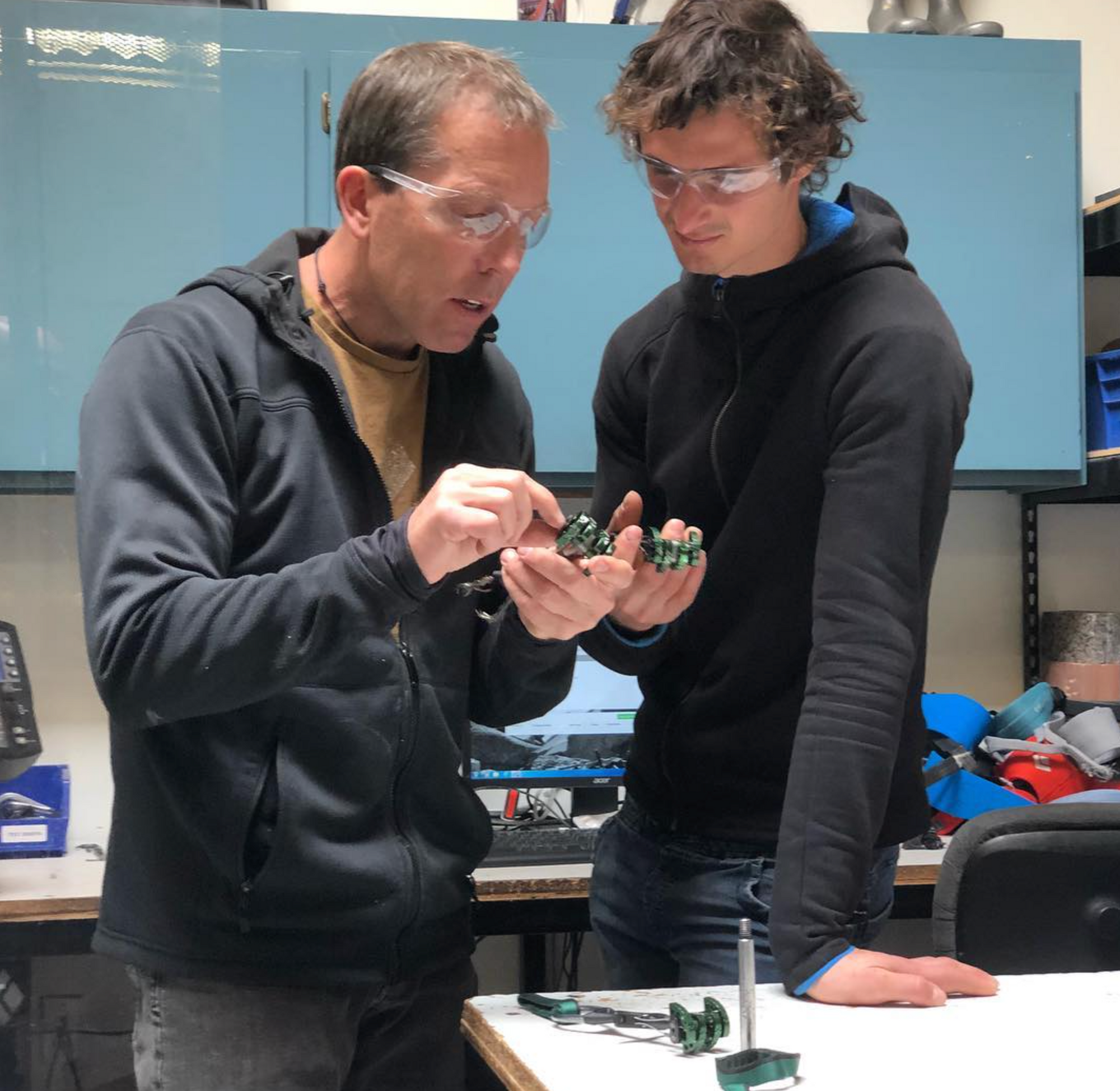
My job has changed a lot through the years. I used to run the quality department for 11 years, and then was the Business Unit Director for the Climbing Product Division for 6 years. I finally ended up being the VP of Product. So my role has changed over the 20 years but regardless, the first thing you have to do to be successful is to acknowledge that you can't please everybody. You have to take all the inputs from the consumers, athletes, the retailers, your friends, fellow employees, the design team, and your own personal experience of course, and then your job is to decide, "Okay, what are we going to do?" Because, chances are, you're not going to make one thing that everybody thinks is perfect.
Once you’ve accepted that, then the crux is trying to find the balance. You need to balance the user needs (features, weight, aesthetics, functionality, etc) with costs, retail price, timelines, etc., while never compromising safety and quality. There are a lot of factors at play, but when you find the right balance, the result is a winning product.
Well, one thing to be clear, I always say that it really does take a village. So many people are involved in the creation of every single product at Black Diamond. I've maybe helped steer some things over the years but I can't even tell you the number of people it takes. When you go into a climbing or ski shop, and look at a piece BD gear, or apparel, there are probably 60 to 70 people that were directly involved from the concept to it sitting on the store shelf. The business guys, the design team, the supply chain guys, the marketing folks, the purchasing team, quality, the photographer, the field test guys plus more. When people ask me, "So what do you actually do here?" I usually say something like, "Well, I don't actually DO anything” rather I like to think I just help steer the ship.
It’s fun to be a part of so many great products and then when you go out into the mountains and see your everyday climbers using the gear and having a great time, or you go see a Reel Rock, and you see the Alex Honnolds, and the Tommy Caldwalls, and the Babsi’s doing incredible things. Ultimately it’s pretty cool to be able to think that you had a bit of a hand in helping create the products that allowed this to happen. I've known Alex for years and Tommy for years - and several times they have emailed me and said, for example, "Hey, we just did this route on El Cap and there's no way we could have done it without the Z4", the new cams that we have. I think that’s pretty cool and the whole team gets stoked hearing stuff like that.
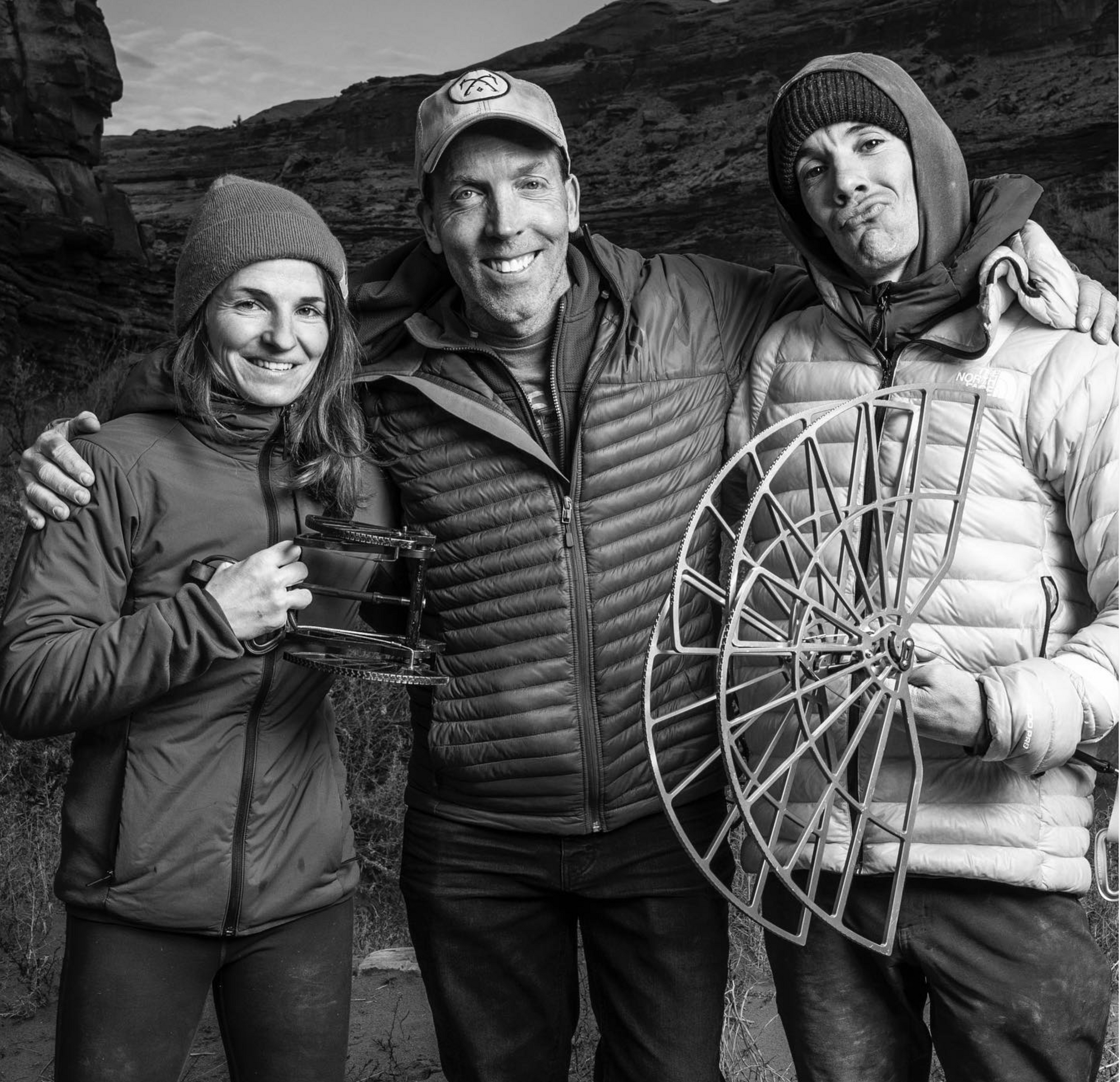
As far as favorite products that I’ve been involved with - tough to say: all of the Camalots of course, including our April Fools Launch and the #7 and #8 - Camalots are probably THE product that people associate with Black Diamond more than anything; Our harness line, including the Vision, Zone and Technician; all of our helmets including the Vapor; Some of the packs - the Creek Pack, and the Pipe Dream Pack, the Mission series and the Speed series as well as the Blitz series; Some of the apparel pieces like the Alpine Start or the Vision Hybrid Hoody.
We have so many products and I’ve been fortunate enough to be involved in some level in a lot of them. I feel pretty darn lucky to have a ton of really smart, dedicated, hardworking guys and girls to work alongside over the last 20 years. When I started at BD, I was 34 or so and I remember thinking, "Wow, everyone is really young running this place, and really smart, and really dedicated and motivated." And now I'm 54 and everyone is still really young, and really smart, and really motivated, and really dedicated, but I’m old! It's pretty awesome - this team and this company really care about this stuff.
It's been super cool for a bunch of reasons. All these climbers are elite athletes (and I most definitely am NOT) and I’m fortunate enough to get to climb with them quite a bit. So frankly, I get to do all kinds of routes that I couldn't do without them. When we go out they would say, "Hey man, what do you want to do?" And I make it very clear, "I want to do something that I couldn’t or wouldn't do unless I was with you!” And undoubtedly they say, "No problem!” I get to climb routes that I basically couldn't do without them.
Also, these athletes climb a lot - they are out there all the time. It's their job. So I'm always trying to pick up tips, not necessarily gear tips, but how are they more efficient? What do they have in their pack? Why do they carry this? They have their systems dialed - they have it figured out. I’m always trying to learn from these professional athletes.
For example, most of the ice climbing approaches in the Canadian Rockies are long. So you do this approach and you’re all sweaty. Well, Raphael Slawinski always gets to the base of a route, and then changes to dry socks before casting off... That's a great tip, because everyone gets sweaty on the approach, even your feet are sweaty, then you start climbing and two hours later your feet start to get cold. So starting in dry socks helps keep your feet warm for the whole day. It’s a basic thing, not hard to do, just hard to know that you should do that until you’re learning from the guys that are out all of the time and have all of these little tips and tricks figured out. So I always try to steal their tricks!
I climb routes that I couldn't do without them, and I steal their tricks, which is great. And I try to spread that knowledge.
As well, we are always talking about gear. When I'm climbing with these athletes, it’s not all fun and games. It’s kind of mentally exhausting, because though we’re climbing cool stuff often times at my limit, we’re also nonstop just nerding out on gear. It’s a great opportunity for two way communication on the progress of projects or gear opportunities, or right down to the minutia product details.
The short story is that after 30 years of working, 20 of those at Black Diamond, I am stepping down from my role as VP of Product and retiring at the end of March 2023. Just as Ellen and I had planned for our one year honeymoon trip, we have always had a plan to retire on our 25th wedding anniversary. So I’m punching out a few months early, and Ellen won’t be far behind. We will split our time between Canmore, Alberta, and Las Vegas with the goal being to maximize climbing. I am fortunate that I will be staying on with BD as a man in the field, providing product and market insight, product feedback, and content creation in my new ambassador-type role dubbed Chief Field Liaison Officer. I couldn’t be more stoked and am looking forward to quarterly visits back to Black Diamond’s HQ in Salt Lake City where I undoubtedly will continue to enjoy all that the Wasatch range has to offer.
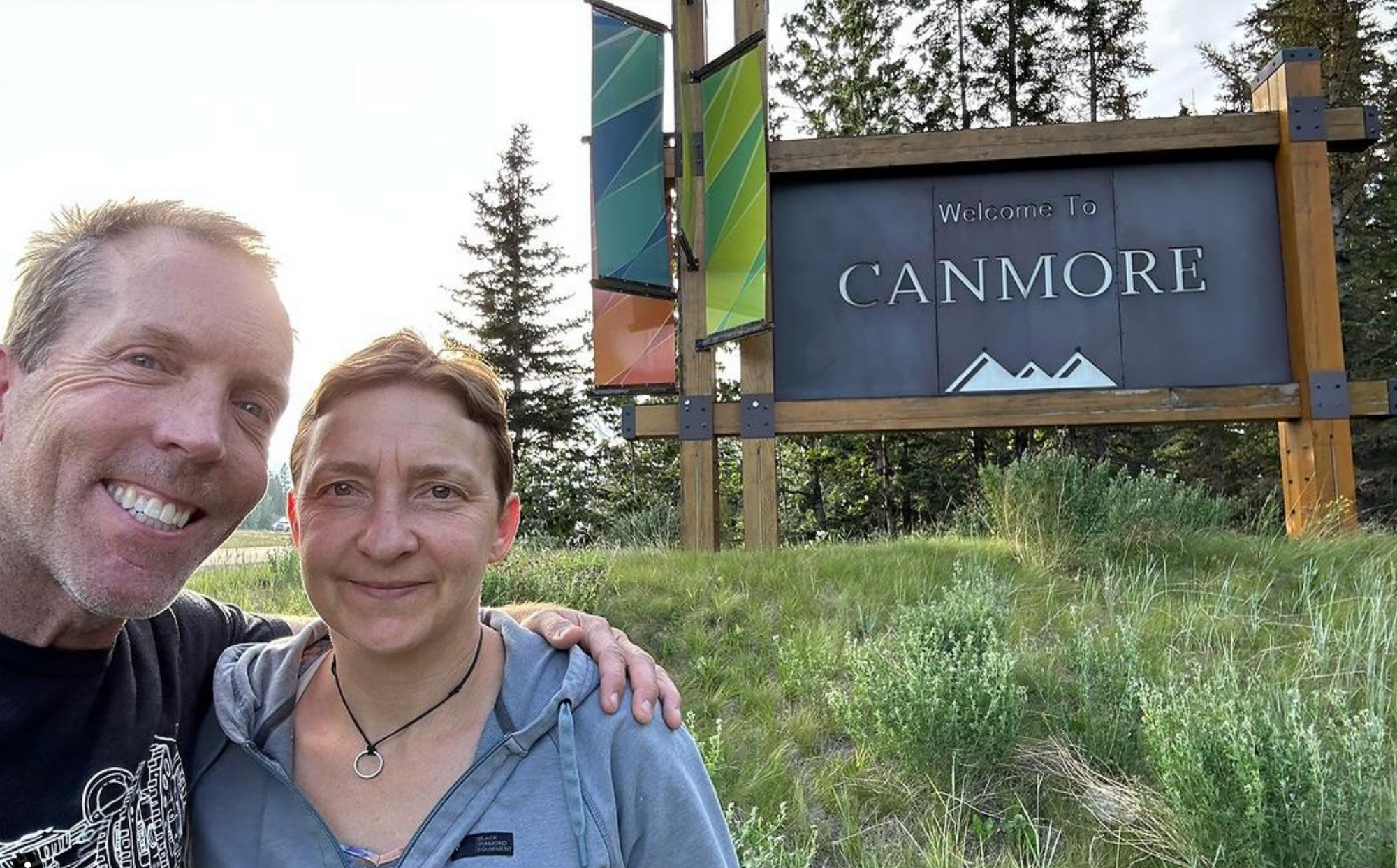
Your cart is currently empty.